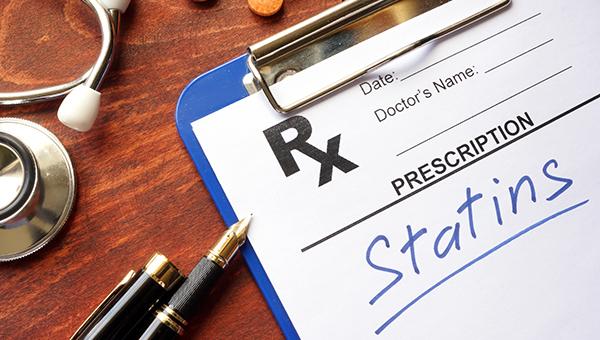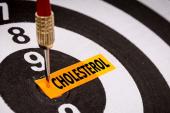Recurrent Stroke Risk Lower With More Intense LDL-Lowering: Meta-analysis
The effect was not seen for patients without atherosclerosis, leading some to question the need for treatment in that group.

The more intense the LDL cholesterol-lowering with statin-based therapies for patients with a history of ischemic stroke and atherosclerosis, the greater the benefit in terms of secondary prevention, according to a new meta-analysis. This benefit includes a 21% lower risk of stroke.
While plenty of studies have shown a link between LDL-lowering and reduced MACE in the general atherosclerosis population, the data has been inconsistent when it comes to stroke. The Treat Stroke to Target trial, for example, showed MACE benefits with more aggressive treatment in patients who had had a TIA or ischemic stroke, but the trial was stopped early and its secondary endpoints lacked power.
“We would suggest more-intensive LDL cholesterol-lowering therapy for patients with ischemic stroke and having evidence of atherosclerosis,” study co-author Chia-Yu Hsu, MD (Chang Gung University College of Medicine, Chiayi, Taiwan), told TCTMD in an email. “For patients with ischemic stroke but not having evidence of atherosclerosis, intensive LDL cholesterol-lowering statin-based therapies, such as use of high-intensity statin, might not be suggested in most situations considering the uncertain benefits of secondary stroke prevention and the increased risk of hemorrhagic stroke associated with intensive LDL cholesterol-lowering.”
Commenting on the study for TCTMD, Eugenia Gianos, MD (Northwell Health, New York, NY), said the analysis is “a good reminder of the importance of getting LDL to a very low value in patients who've had an ischemic stroke with atherosclerosis.” In the past, she added, it was unclear “whether or not it's simply the high-potency statin in and of itself that leads to improved stroke outcomes versus the LDL-lowering, and I think this lends some support to the fact that . . . getting the LDL to a low value, as illustrated through many trials, is actually extremely important in terms of reducing recurrent events overall, but also specifically reducing stroke in the correct population.”
Mitchell Elkind, MD (NewYork-Presbyterian Hospital/ Columbia University Irving Medical Center, NY), who was not involved in the research, also told TCTMD he had wondered about that same question. “These results would suggest that much of the benefit is actually in the LDL-lowering effect,” he echoed.
Reduced Recurrent Stroke
For the study, published online last week ahead of print in JAMA Neurology, Meng Lee, MD (Chang Gung University College of Medicine), and colleagues included data from 11 randomized controlled trials comparing more with less-intensive LDL-lowering therapies among 20,163 patients with stroke (67.0% men; mean age 64.9 years).
Over a mean follow-up of 4 years, they showed a reduced absolute risk of recurrent stroke with more- versus less-intensive therapies (8.1% vs 9.3%; RR 0.88; 95% CI 0.80-0.96), with a number needed to treat of 90. This benefit did not differ by LDL-lowering strategy, including statins versus no statins (RR 0.90; 95% CI 0.81-1.01), more statins or ezetimibe versus less (RR 0.77; 95% CI 0.62-0.96), and statins plus PCSK9 inhibitors versus statins plus placebo (RR 0.90; 95% CI 0.71-1.15; P = 0.42 for interaction).
Getting the LDL to a low value. . . is actually extremely important in terms of reducing recurrent events overall, but also specifically reducing stroke in the correct population. Eugenia Gianos
When the researchers looked specifically at trials where all patients had evidence of atherosclerosis, more- versus less-intensive LDL-lowering therapies reduced the risk of recurrent stroke (RR 0.79; 95% CI 0.69-0.91), but this was not the case in trials where most patients didn’t have evidence of atherosclerosis (RR 0.95; 95% CI 0.85-1.07; P = 0.04 for interaction).
Additionally, more-intensive therapies lowered the risk of MACE (RR 0.83; 95% CI 0.78-0.89), with a number needed to treat of 35, but upped the chance of hemorrhagic stroke (RR 1.46; 95% CI 1.11-1.91), with a number needed to harm of 242.
“For patients with ischemic stroke but not having evidence of atherosclerosis, intensive LDL cholesterol-lowering statin-based therapies might not be suggested in most situations considering the uncertain benefits of secondary stroke prevention and the increased risk of hemorrhagic stroke associated with intensive LDL cholesterol-lowering,” Hsu said.
Always a Balance
For Elkind, the overall finding that LDL-lowering reduces the risk of stroke was not unexpected. Rather, it’s “reassuring and essentially confirms the studies that had been done specifically in stroke patients,” he told TCTMD.
However, he was surprised to see an association between LDL-lowering and an increased risk of hemorrhagic stroke. “Other meta-analyses in primary prevention and other large studies have not convincingly shown that lowering LDL was associated with risk of hemorrhage,” he said. “So I think there's some conflicting data there, and perhaps further studies will help to elucidate that further.”
For now, the evidence leads him to question whether statins need to be used in all stroke patients. “We have many different causes of stroke—we sometimes see stroke in younger patients—and I think that these data would make me more hesitant to use a statin in younger patient without atherosclerosis,” Elkind said. “I'd feel more comfortable not committing them to years and years of statin therapy just because they had a stroke. I guess I would look more assiduously for evidence of atherosclerosis in a younger patient before I would start to them on a statin.”
At the same time, he said, “for those who can't tolerate a statin whose LDL is elevated, these data would be supportive that we should use those alternative strategies [like ezetimibe and PCSK9 inhibitors] and not just say, ‘Oh, you can't take a statin? Then that's fine, don't take anything at all,’ in that category.”
There's still more work to be done to sort out how we balance the other effects of statins like effects on blood clotting and potentially on inflammation as well. Mitchell Elkind
In an accompanying editorial, Didier Leys, MD (University of Lille, France), and colleagues similarly write that the take-home message from the study is: “The level of LDL cholesterol should be lowered below 70mg/dL by any means after an ischemic stroke in patients with evidence of atherosclerosis. For those without atherosclerosis, the benefit of lowering the level of LDL cholesterol below 70 mg/dL versus between 90 and 110 mg/dL is much smaller, and an individualized evaluation of the risk to benefit ratio, bearing in mind a small increase in risks of intracerebral hemorrhage and type 2 diabetes, is needed.”
Gianos said she remains “strongly” in support of using statins in stroke patients, though that might change over the next decade “as we get more outcomes data and more, perhaps, even real-world data to support the use of other therapies.” She would especially like to see dedicated randomized trials in the secondary stroke prevention space.
Elkind also said “there's still more work to be done to sort out how we balance the other effects of statins like effects on blood clotting and potentially on inflammation, as well.” The eternal need to balance ischemia and bleeding when treating stroke patients also means that “we may be willing to tolerate an increase in the risk of bleeding if there is in fact a benefit in reducing ischemia,” he added. “So I think further studies with statins and other LDL-lowering treatments and in combination with various blood-thinning regimens may tell us more ultimately about what the best combination is.”
And yet, LDL-lowering only “modestly” reduced the benefit of recurrent stroke by an absolute value of about 1% over 4 years, Elkind highlighted. “It points to the fact that we still need other ways of reducing risk of recurrence and we need to be better at changing people's behavior as well and supporting things like people getting enough exercise, eating right, and controlling their blood pressure and other things to reduce risk of stroke.”
Yael L. Maxwell is Senior Medical Journalist for TCTMD and Section Editor of TCTMD's Fellows Forum. She served as the inaugural…
Read Full BioSources
Lee M, Cheng C-Y, Wu Y-L, et al. Association between intensity of low-density lipoprotein cholesterol reduction with statin-based therapies and secondary stroke prevention: a meta-analysis of randomized clinical trials. JAMA Neurol. 2022;Epub ahead of print.
Leys D, Casolla B, Cordonnier C. Low-density lipoprotein cholesterol level after a stroke—reducing it by any means. JAMA Neurol. 2022;Epub ahead of print.
Disclosures
- Gianos and Elkind report no relevant conflicts of interest.





Comments